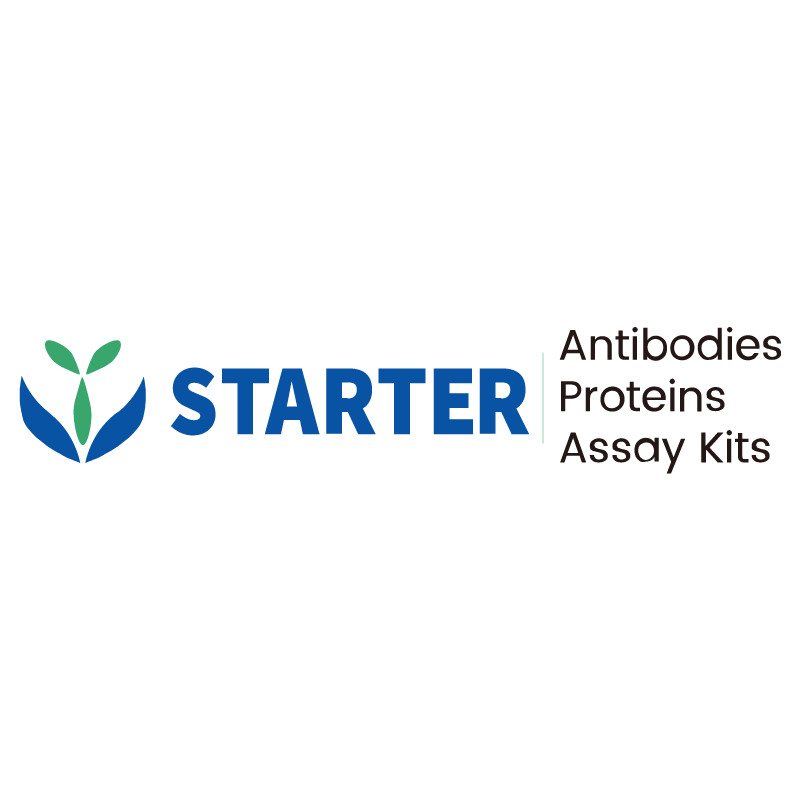WB result of Osteopontin Recombinant Rabbit mAb
Primary antibody: Osteopontin Recombinant Rabbit mAb at 1/1000 dilution
Lane 1: HepG2 whole cell lysate 20 µg
Secondary antibody: Goat Anti-rabbit IgG, (H+L), HRP conjugated at 1/10000 dilution
Predicted MW: 35 kDa
Observed MW: 70 kDa
Product Details
Product Details
Product Specification
| Host | Rabbit |
| Antigen | Osteopontin |
| Synonyms | Bone sialoprotein 1; Nephropontin; Secreted phosphoprotein 1 (SPP-1); Urinary stone protein; Uropontin; SPP1; BNSP; OPN |
| Immunogen | Recombinant Protein |
| Location | Secreted |
| Accession | P10451 |
| Clone Number | S-1005-50 |
| Antibody Type | Recombinant mAb |
| Isotype | IgG |
| Application | WB, IHC-P |
| Reactivity | Hu |
| Positive Sample | HepG2 |
| Purification | Protein A |
| Concentration | 2 mg/ml |
| Conjugation | Unconjugated |
| Physical Appearance | Liquid |
| Storage Buffer | PBS, 40% Glycerol, 0.05% BSA, 0.03% Proclin 300 |
| Stability & Storage | 12 months from date of receipt / reconstitution, -20 °C as supplied |
Dilution
| application | dilution | species |
| WB | 1:1000 | Hu |
| IHC-P | 1:1000 | Hu |
Background
Osteopontin (OPN), also known as secreted phosphoprotein 1 (SPP1), is a multifunctional protein that plays significant roles in various biological processes. OPN is associated with numerous inflammatory conditions, including infections, allergic responses, autoimmunity, and tissue damage. It is expressed by many cell types in the peripheral immune system and has various functions that can be either beneficial or detrimental. OPN is involved in bone metabolism and homeostasis, playing a role in neuron-mediated and endocrine-regulated bone mass. It is secreted by osteoblasts and other cells in the bone marrow and is important for the proliferation, migration, and adhesion of bone-related cells such as bone marrow mesenchymal stem cells, hematopoietic stem cells, osteoclasts, and osteoblasts. It has been implicated in the occurrence and development of several bone-related diseases, such as osteoporosis, rheumatoid arthritis, and osteosarcoma. It is also linked to cardiovascular diseases, cancer, diabetes, and kidney stone diseases. Moreover, OPN promotes tumor cell growth and induces anti-apoptotic signaling through its activation of CD44 and integrin heterodimers. It enhances tumor cell mobility, invasiveness, and epithelial-mesenchymal transition, which are crucial for dissemination and metastasis.
Picture
Picture
Western Blot
Immunohistochemistry
IHC shows positive staining in paraffin-embedded human kidney. Anti-Osteopontin antibody was used at 1/1000 dilution, followed by a HRP Polymer for Mouse & Rabbit IgG (ready to use). Counterstained with hematoxylin. Heat mediated antigen retrieval with Tris/EDTA buffer pH9.0 was performed before commencing with IHC staining protocol.
IHC shows positive staining in paraffin-embedded human liver. Anti-Osteopontin antibody was used at 1/1000 dilution, followed by a HRP Polymer for Mouse & Rabbit IgG (ready to use). Counterstained with hematoxylin. Heat mediated antigen retrieval with Tris/EDTA buffer pH9.0 was performed before commencing with IHC staining protocol.
IHC shows positive staining in paraffin-embedded human endometrial cancer. Anti-Osteopontin antibody was used at 1/1000 dilution, followed by a HRP Polymer for Mouse & Rabbit IgG (ready to use). Counterstained with hematoxylin. Heat mediated antigen retrieval with Tris/EDTA buffer pH9.0 was performed before commencing with IHC staining protocol.
IHC shows positive staining in paraffin-embedded human hepatocellular carcinoma. Anti-Osteopontin antibody was used at 1/1000 dilution, followed by a HRP Polymer for Mouse & Rabbit IgG (ready to use). Counterstained with hematoxylin. Heat mediated antigen retrieval with Tris/EDTA buffer pH9.0 was performed before commencing with IHC staining protocol.


